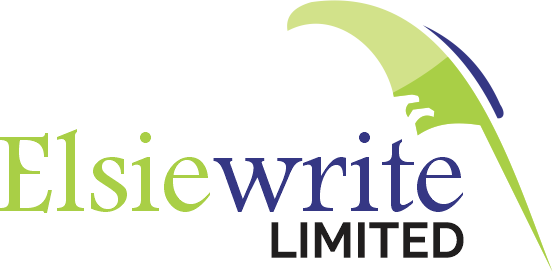Getting started with writing doesn’t have to be complicated, but having the right tools can make the journey smoother, more productive, and even enjoyable. From essential basics like notebooks and pens to advanced software for organizing complex projects, choosing the right tools can boost your creativity and streamline your workflow. Here’s a guide to essential writing tools for every writer, whether you’re starting with short stories, blog posts, or your first novel.
1. Notebooks and Pens: The Basics of Writing
There’s something timeless and comforting about writing by hand. A notebook and a good pen offer a simple and flexible way to jot down ideas, brainstorm, or even draft full passages. Plus, they’re incredibly portable, allowing you to capture thoughts and inspirations wherever you go.
Benefits of Notebooks and Pens:
- Simplicity: There’s no tech to learn or update, so you can focus on your ideas.
- Flexibility: Use a notebook for brainstorming, outlining, journaling, or drafting scenes and paragraphs.
- Creativity: Writing by hand can help you slow down and think differently than typing, often leading to unexpected insights.
Types of Notebooks and Pens:
- Notebooks: Whether you prefer a classic Moleskine, a spiral notebook, or a bullet journal, choose something that feels comfortable and inspires you.
- Pens: A smooth, reliable pen is key. Try gel pens, fountain pens, or classic ballpoints to see what feels best.
Using a notebook and pen may seem simple, but it can be the perfect way to kick-start your writing habit, especially when you want to break away from screens.
2. Word Processing Software: Essential for Drafting and Editing
While handwritten drafts can be useful, eventually, you’ll need word processing software to organize, edit, and finalize your work. Word processing software allows you to type quickly, rearrange sections, and easily correct errors, making it an essential tool for any writer.
Popular Word Processing Options:
- Microsoft Word: This classic software is still popular among writers for its extensive formatting and editing capabilities. While it’s a paid tool, it offers robust features that can handle anything from simple documents to complex manuscripts.
- Google Docs: A free, cloud-based alternative, Google Docs is excellent for real-time collaboration and easy access from any device. It’s perfect for writers who work with editors or co-authors, and it automatically saves your work.
- Apple Pages: If you’re a Mac user, Apple Pages is a great alternative. It’s free, user-friendly, and compatible with other word processing software, so you can export to PDF or Word formats when needed.
Choosing a reliable word processor is essential, as you’ll spend a lot of time drafting and editing within it. Look for one that suits your workflow and is comfortable to use over long periods.
3. Writing Software for Structure and Organization
If you’re working on a longer or more complex project, like a novel or non-fiction book, you may benefit from writing software that goes beyond basic word processing. Specialized software can help you organize chapters, manage character profiles, and structure your plot, making it easier to navigate long-form projects.
Popular Writing Software Options:
- Scrivener: Scrivener is a favorite among novelists, screenwriters, and researchers. It offers an all-in-one workspace where you can draft, research, and organize your entire project in one place. Scrivener allows you to break your work into sections, easily rearrange parts of your manuscript, and keep notes and research at hand.
- Ulysses: Designed for Mac users, Ulysses is a minimalist writing app that combines simplicity with powerful organizational tools. It uses a markdown editor and has a distraction-free interface, making it ideal for writers who prefer a clean workspace.
- Dabble: Dabble is a user-friendly, cloud-based writing tool focused on helping novelists plot and draft. It includes tools for managing plot points, characters, and scenes, making it easier to stay organized as you build your story.
Using specialized writing software can make a big difference in how efficiently you manage large projects, helping you focus more on the writing and less on navigating through drafts and notes.
4. Grammar and Style Checkers: Perfecting Your Prose
Every writer knows that typos and grammar mistakes can distract readers and undermine credibility. Fortunately, there are tools available to catch these errors and help you refine your style. Grammar and style checkers are particularly helpful during the editing stage, providing suggestions for everything from punctuation to word choice.
Top Grammar and Style Checker Options:
- Grammarly: Grammarly is one of the most popular grammar tools, offering a browser-based app, desktop app, and browser extensions. It checks for grammar, spelling, style, and even tone, making it useful for all types of writing.
- Hemingway Editor: This tool focuses on readability, helping you simplify your sentences, eliminate passive voice, and improve the clarity of your prose. It’s great for writers aiming to produce clean, concise writing.
- ProWritingAid: ProWritingAid offers a comprehensive suite of grammar, style, and readability checks. It’s especially popular with novelists and can analyze your work for overused words, sentence structure, and pacing issues.
While these tools are incredibly helpful, remember that they’re not perfect. Use them to identify areas of improvement, but always apply your own judgment to ensure that your unique voice shines through.
5. Distraction-Free Writing Apps: Focus on Your Craft
Distractions can be a writer’s worst enemy, especially with notifications, emails, and social media constantly vying for your attention. Distraction-free writing apps are designed to eliminate interruptions, helping you concentrate on the words in front of you.
Popular Distraction-Free Writing Apps:
- FocusWriter: This free app offers a full-screen, customizable interface designed to block out everything but your writing. It includes daily goal-setting options, so you can track your progress without the clutter of traditional word processors.
- OmmWriter: Known for its relaxing background music and simple interface, OmmWriter creates an immersive environment to help you enter a flow state while writing. It’s great for writers who enjoy a calming, minimalist workspace.
- ZenWriter: Another minimalist app, ZenWriter includes soothing background music and full-screen mode, helping you block out distractions and get into the creative zone.
Distraction-free apps are perfect if you find it challenging to stay focused while working on a computer. By removing unnecessary elements, these tools make it easier to get your words flowing.
6. Research and Note-Taking Tools: Organize Your Ideas
If your writing involves research or complex ideas, having a tool to organize your notes and resources can be invaluable. Research tools allow you to save articles, jot down thoughts, and create outlines, all in one place.
Research and Note-Taking Tools:
- Evernote: Evernote is a versatile tool for saving notes, web articles, images, and ideas in one place. It syncs across devices, so you can access your notes wherever you go. It’s perfect for organizing research for non-fiction projects or tracking inspiration for fiction.
- OneNote: Microsoft OneNote is another excellent choice for note-taking and organization. It allows you to create notebooks, section off topics, and collaborate with others, making it suitable for complex projects and brainstorming sessions.
- Notion: Known for its customizability, Notion allows you to organize notes, to-do lists, calendars, and databases. You can structure it however you want, making it a powerful tool for writers who like to keep detailed outlines or extensive world-building notes.
Using a research tool can help you organize your ideas, store relevant resources, and keep track of your progress, which is especially useful for writers working on in-depth topics or long-term projects.
7. Productivity and Time-Management Tools: Stay on Track
Writing requires time and discipline, and managing your schedule effectively can help you stay on track, avoid burnout, and reach your writing goals. Productivity tools can help you build habits, track your progress, and make sure you’re dedicating enough time to your writing.
Productivity and Time-Management Tools:
- Trello: Trello is a popular project management tool that uses a visual board layout to help you track tasks and progress. You can create separate boards for each writing project, add deadlines, and create to-do lists, making it easy to stay organized.
- Forest: For writers who struggle with phone distractions, Forest gamifies focus. You set a timer, and as you work, a virtual tree grows. If you exit the app, the tree dies. It’s a fun way to stay committed to focused work sessions.
- Pomodoro Timers: Using a Pomodoro timer, like Focus To-Do or Tomato Timer, helps you break work into focused intervals (usually 25 minutes) followed by short breaks. This method keeps you productive without feeling overwhelmed.
Having productivity tools in your toolkit can help you create a structured writing routine and make steady progress on your projects.
Final Thoughts
Writing tools can make a big difference in helping you overcome challenges, stay organized, and maximize productivity. From basic notebooks to advanced writing software, having the right tools allows you to focus more on your craft and less on logistics. Experiment with different tools to find the ones that best fit your writing style and workflow. Remember, while tools are helpful, the most important thing is simply to start writing and keep going. Every writer’s journey is unique, and as you build your toolkit, you’ll discover what works best for your creative process.

